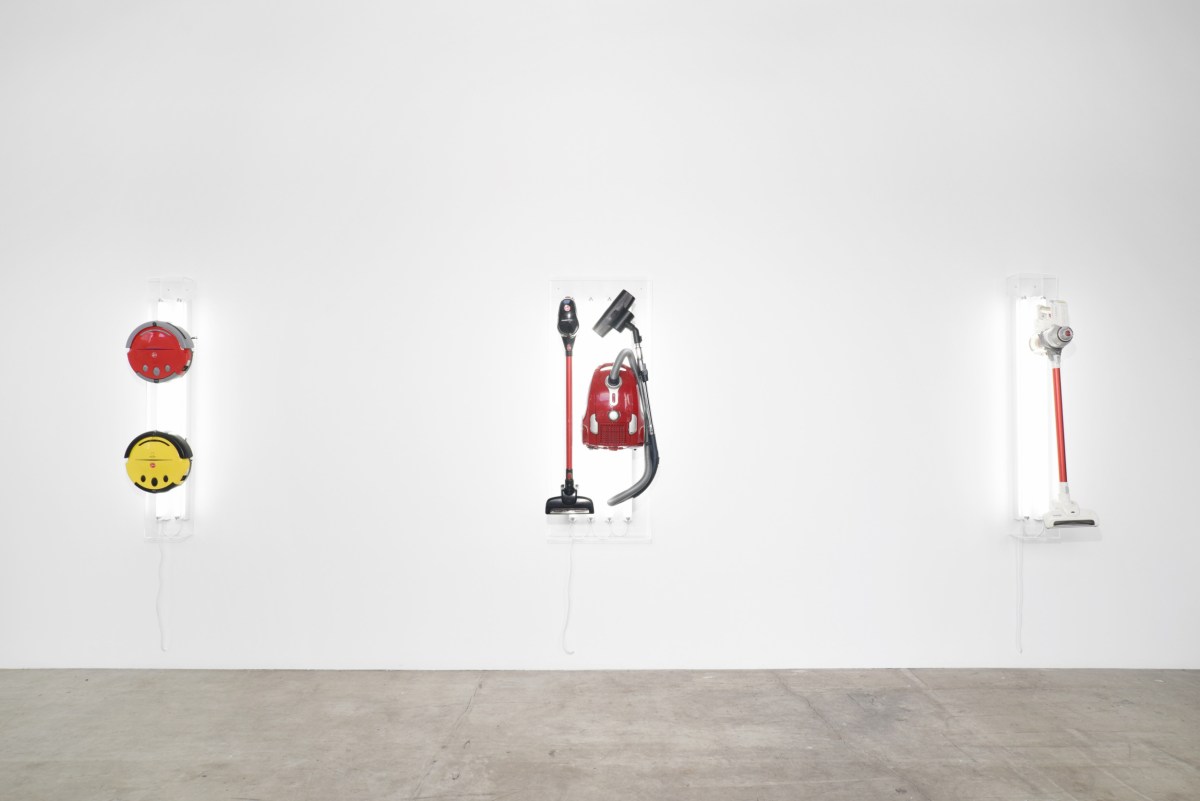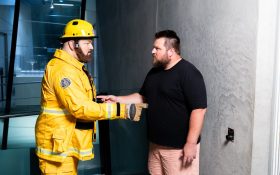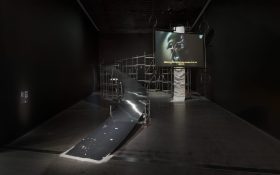For 2024, Perth Institute of Contemporary Arts (PICA) has reimagined its artist-in-residency program, with a host of new local, interstate and international artists taking up studios inside the heritage-listed building.
A landmark of Perth’s central cultural precinct, PICA offers, alongside its exhibition program, a renewed commitment to ‘sharing space and nurturing practices’ through this invigorated residency suite. The newly named Hyper Local and Quick Response residencies join a recently on-boarded Company in Residence, pvi collective, and a collaborative First Nations Residency with STRUT Dance.
All resident artists will benefit from proximity to each other, studio spaces, curatorial advice/consultation and public events, as well as valuable research and creative development time. Within this refreshed residency stream PICA welcomes two Hyper Local residencies, encouraging two WA artists to consolidate a long-form project or body of work, each for a tenure of six months.
Perth/Boorloo-based sculptor David Attwood is first off the ranks for the Hyper Local Residence. Attwood creates readymades and sculptural assemblages using contemporary commodities. For Hyper Local, he plans to develop a new body of sculptural work using domestic appliances, and discusses the project with ArtsHub.
ArtsHub: Your Hyper Local residency is informed by interests in inventor Frances Gabe (US, 1915-2016) who designed and patented a “self-cleaning house”, as well as writings by contemporary theorist Helen Hester, who writes on “post-work alternatives to housework”.
Can you tell us more about how you became interested in these ideas? Why these thinkers, why now, and what are some of the touchstones for their ideas informing your project?
David Attwood: I first came across Frances Gabe in an article by Helen Hester called ‘Domestic Realism’. It riffs on Mark Fisher’s book Capitalist Realism, particularly the idea that it has become difficult to imagine alternatives to capitalism. Hester argues that domestic work too has become socially entrenched in a way that makes it impossible, or at least difficult, to imagine alternatives. She points to Gabe as an example of the post-work imaginary, where the potential for housework to be automated is explored.
There’s a great video of Gabe showing a local news channel through her house, and some of her “prototypes” for what would be ideally an all-encompassing, self-cleaning house. Essentially Gabe’s invention would turn the entire house into a dishwasher, or a washing machine, where sprinklers are used to rinse everything – as in all furniture, all surfaces – and drains are fitted in the floors for all the water to disperse. Knick-knacks, keepsakes, artworks and the like would be protected by plastic cases … [It’s] a really out-there idea, but to Hester’s point, an attempt to imagine a world where domestic drudgery is addressed and remedied by technology.
In the video, the quite ad hoc/provisional pipe system set-up in Gabe’s kitchen fails within seconds of her turning it on, and she kind of haphazardly tries to plug a hole with some tape.
At a material level, her vision is really compelling to think about sculpturally. The concepts of a self-cleaning house, automated domestic maintenance, the so-called “post-work imaginary” and the potential for “labour-saving” appliances to address these ideas through sculpture – these are really what’s informing the project.
There are still a lot of contemporary debates around gender divisions and the inequalities of labour/housework within current writing and thinking, outside and inside of the art world and social theories, most famously second, third-wave feminism. Do you think that gender remains a helpful way to think about contemporary art making in 2024?
One of the texts that has been really helpful for my thinking for this project is called More Work for Mother by Ruth Schwartz Cowan. She’s credited as theorising the “Cowan Paradox” where she illustrates that, despite the influx of so-called labour-saving devices – vacuums, microwaves, washing machines etc – the amount and the intensity of work being performed in the home has increased, not decreased.
Through industrialisation, some jobs/chores previously performed collectively by the household had instead fallen to an individual (the mother), and some jobs/chores done communally outside the home, or that were commercially outsourced, were instead done inside the home, in isolation. Laundry is used as an example of this theory.
I’m interested in using these ideas or ways of thinking about products and objects to inform an approach to making sculpture. Currently, I’m working with a specific model of the Samsung front-loader washing machine.
The concepts of reproductive labour, and the Wages for Housework movement are useful for thinking about work in an expanded, holistic way, beyond just waged work. Ultimately, I’m interested in how sculpture can then agitate these ideas.
Thinking about how the “readymade” was popularised in the art world in a distinct post-war economic climate, and has its own gender stereotypes/assumptions that elevated it to “art” status, is the readymade still relevant today in the same way, among the banality of consumerism? Or what is it that interests you about mass-produced objects and contemporary art making?
Regarding the readymade and gender, there’s a great essay by Helen Molesworth called ‘Work Avoidance: The Everyday Life of Marcel Duchamp’s Readymades’, where she points out that many of the first readymades (the fountain, the bottle-rack, the comb, the clothes rack, the snow shovel) are tools or items of domestic maintenance, of reproductive labour. She suggests that while the readymade called into question notions of artistic skill and authorship etc, it also put into contrast the kind of work that is championed and celebrated, as in artistic, creative work, and the type of work that is denigrated, or [placed on the] periphery, as in housework.
For me I think there remains some merit in the use of the readymade to these ends, even if its ability to shock or raise other questions around skill and authorship have long been absorbed/accepted.
The project I’m working on for the PICA residency, as well as some of my recent projects using domestic appliances, are not concerned with housework per se, but are interested in the ways that the relentlessness of domestic maintenance might speak to the centricity and dominance of work in our lives more generally. Which is to say that I’m interested in a capitalistic imperative to always be maintaining, to always be productive, more than I am interested in housework specifically.
What are the benefits of an extended residency period for your art practice where you are working mostly independently on a long-form project? The pressure to have an output for this time period would seem to be in contrast to some of the concepts you’re working with. How do you think this may manifest?
Practically speaking, the PICA residency is beneficial in that the studio is rent free, it’s big, it’s accessible almost 24/7… These things really help when developing new work, or a long-form project, although I don’t think six months is a long time!
The residency is great in that there isn’t really any pressure to achieve a resolved output as such, or to stick to one thing. To me it feels like PICA is putting faith in the residents to use the residency in ways they see fit, which is great.
Read: Creative development – a work in progress
Of course, there is a self-imposed pressure to be productive, to make the most of things. As for how this may resonate with the concepts I’m dealing with, there is a temptation to incorporate these conditions directly, to fold the institution and the residency into the project. But for now I have a few forms that I’m working with – the Samsung washing machine, for instance – and am looking forward to seeing where that goes.
Is your work concerned with questions of moral value attached to cleaning, like in the same way as there was generations ago? For instance, I’m thinking about the old saying “cleanliness is next to Godliness”, or how TV shows like Hoarders popularise intense mess and tidying, or the “transformation” TikToks of cleaning rugs…
There’s an interesting part of Cowan’s book that speaks about a rapid increase in socially acceptable hygiene levels in the early 20th century, and its subsequent effect on housework. Laundry goes from weekly to daily, meals need to be fresher/healthier, surfaces need to tended to more, for example.
There are multiple reasons given for this, not all of them to do with hygiene or health at a scientific level. The relationship of cleanliness to virtuousness, or between working hard and being “good”, yes, as you say “moral”, is interesting to think about, and to my mind is pretty visible in contemporary consumer culture. I’m thinking of Marie Kondo, Dyson, Listerine…
And, lastly, do you own a domestic robot vacuum cleaner?
Not any that aren’t also artworks. I recently bought a Scrub Daddy.
David Attwood is the Hyper Local Artist in Residence at PICA from 22 Jan to 14 July 2024.
This article is published under the Amplify Collective, an initiative supported by The Walkley Foundation and made possible through funding from the Meta Australian News Fund.





